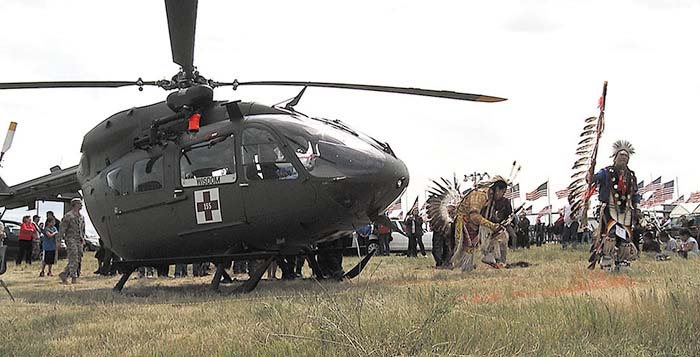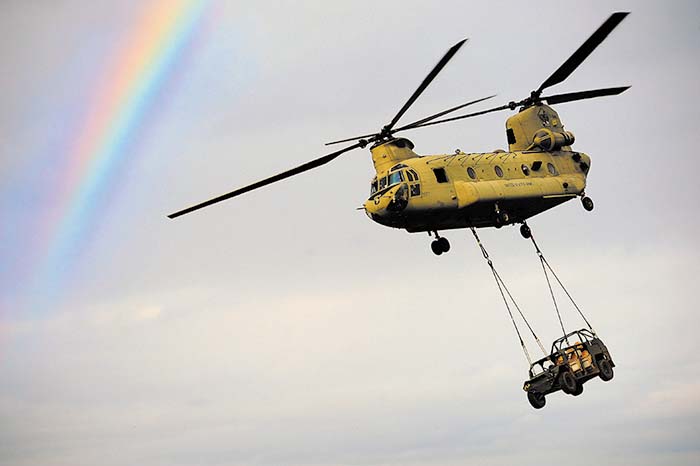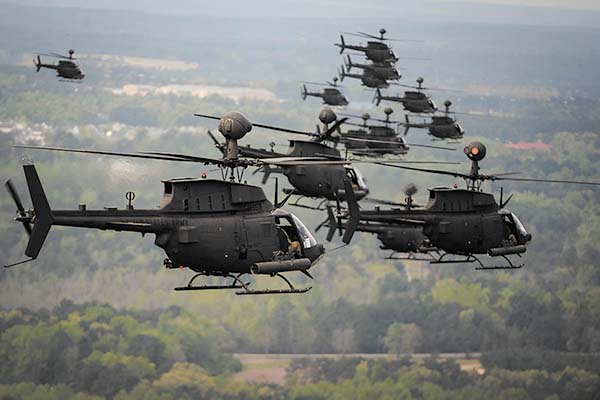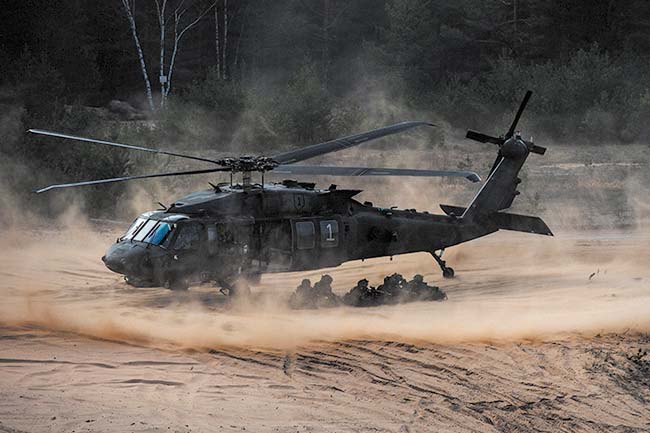
By Micheal Rios, Tulalip News; Photos courtesy U.S. Department of Defense
It’s officially Native American Heritage Month. November’s been federally recognized as such since 1990, when then President George Bush approved a joint resolution making it so. Bringing it local, just days ago Washington State Governor Jay Inslee proclaimed November 2021 as Native American Heritage Month as well.
In his proclamation, Governor Inslee stated Washington joins other states across the nation in celebrating Native American Heritage Month, honoring the unique heritage of this continent’s First People and reaffirming the commitment to respect each Tribe’s sovereignty and cultural identity.
With November 11 being Veteran’s Day, it’s a timely occasion to drop some knowledge about a not so well-known tactic in which the United States Army honors the unique heritage and cultural identity of Native Americans.

Lest we forget, as a cultural demographic Native Americans serve in the armed forces at five times the national average and enlist in the military at the highest per-capita rate of any other group. The Department of Defense recognizes that today’s military successes depend heavily on the contribution of America’s First People. Thirty-one thousand proud Native American men and women are on active duty today, serving in Iraq, Afghanistan, and elsewhere around the world.
This proud warrior tradition of Native people is recognized by the Army and manifests itself in a largely unknown and truly unique manner. Public affairs specialist and Defense.Gov author Katie Lange explains that for the past half-century Army helicopters have been named after the spirit, endurance, and warrior ethos of Native Americans.
Apache. Black Hawk. Comanche. Chinook. Kiowa. Lakota. In addition to being Native American tribes or key Native figures, these are also names of highly specialized, military aircraft. Wonder why?
The U.S. military has a long history with Native Americans. Armed conflicts between the two were commonly known as the American Indian Wars and were fought intermittently from the start of colonization and continued into the early 20th century. But Native Americans also served as some of the fiercest fighters for the United States for more than 200 years. In fact, 32 Native Americans have earned the nation’s highest military award, the Medal of Honor.
The tradition of naming helicopters after Native Americans was once an official regulation. That regulation no longer stands, but the tradition continues.
Here’s how it all came about. According to an unnamed Army museum official, the naming convention goes back to before the Air Force split from the Army in 1947, when Army General Hamilton Howze was assigned to Army aviation. His mission was to develop doctrine and the way forward when it came to employing Army aircraft and how they would support warfighters on the ground.
According to the museum official, Howze wasn’t a fan of the names of the first two helicopters – Hoverfly and Dragonfly. So, he laid out instructions for naming the helicopters after their abilities.

Howze said since the choppers were fast and agile, they would attack enemy flanks and fade away, similar to the way the tribes on the Great Plains fought during the aforementioned American Indian Wars. He decided the next helicopter produced – the well-known H-13 of “M.A.S.H.” fame – would be called the Sioux in honor of the Native Americans who fought Army soldiers in the Sioux Wars and defeated the 7th Calvary Regiment at the Battle of Little Bighorn.
That’s likely how Army Regulation 70-28 was created in 1969. The regulation listed criteria on how popular names would be given to major items of equipment. Name choices had to:
- Appeal to the imagination without sacrificing dignity.
- Suggest an aggressive spirit and confidence in the item’s capabilities.
- Reflect the item’s characteristics including mobility, agility, flexibility, firepower and endurance.
- Be based on tactical application, not source or method of manufacture.
- Be associated with the preceding qualities and criteria if a person’s name is proposed.
According to AR 70-28, Army aircraft were specifically categorized as requiring “Indian terms and names of American Indian tribes and chiefs.” Names to choose from were provided by the Bureau of Indian Affairs.
AR 70-28 was eventually rescinded and replaced with policies that didn’t mention that criteria, but it’s clear that the tradition has continued. You only have to look back to 2012 when the Army named its current primary training helicopter, the UH-72A Lakota, after the Lakota tribe of the Great Sioux Nation in North and South Dakota.
On June 10, 2012, Lakota elders ritually blessed two new South Dakota Army National Guard UH-72A Lakotas at a traditional ceremony on the Standing Rock Reservation in North Dakota. Ceremonies like these happened often over the past several decades.

When presented with this history of naming Army helicopters after Native American Tribes and figures, the Tulalip Veterans Department issued the following statement:
It’s important for our citizens to know this great history because you really have to make a positive impact for any group, let alone the U.S. military, to create a regulation honoring you by name. This is a special recognition unique to the Native American’s fighting spirit. As Native Americans, we serve in the military at the highest rate per capita. That long-lasting tradition of protecting our families, homelands and cultural lifeways is honored by the Army’s desire to name their helicopters after us.
Disclaimer: “The appearance of U.S. Department of Defense (DoD) visual information does not imply or constitute DoD endorsement.”